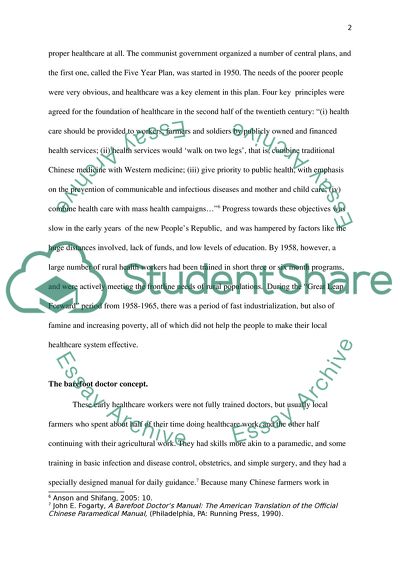Cite this document
(Chinas Healthcare: from Barefoot Doctors to Current Health System Research Paper - 1, n.d.)
Chinas Healthcare: from Barefoot Doctors to Current Health System Research Paper - 1. Retrieved from https://studentshare.org/health-sciences-medicine/1753146-chinas-healthcare-from-barefoot-doctors-to-current-health-system
Chinas Healthcare: from Barefoot Doctors to Current Health System Research Paper - 1. Retrieved from https://studentshare.org/health-sciences-medicine/1753146-chinas-healthcare-from-barefoot-doctors-to-current-health-system
(Chinas Healthcare: From Barefoot Doctors to Current Health System Research Paper - 1)
Chinas Healthcare: From Barefoot Doctors to Current Health System Research Paper - 1. https://studentshare.org/health-sciences-medicine/1753146-chinas-healthcare-from-barefoot-doctors-to-current-health-system.
Chinas Healthcare: From Barefoot Doctors to Current Health System Research Paper - 1. https://studentshare.org/health-sciences-medicine/1753146-chinas-healthcare-from-barefoot-doctors-to-current-health-system.
“Chinas Healthcare: From Barefoot Doctors to Current Health System Research Paper - 1”, n.d. https://studentshare.org/health-sciences-medicine/1753146-chinas-healthcare-from-barefoot-doctors-to-current-health-system.


